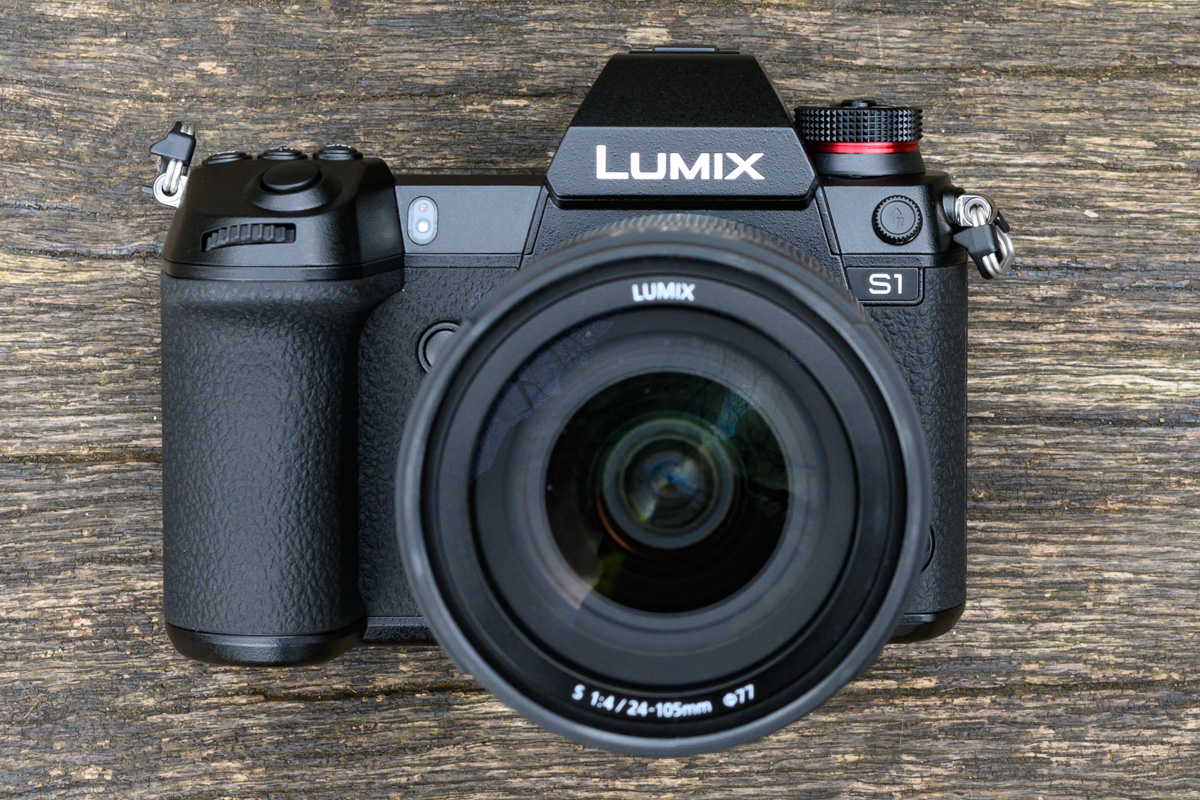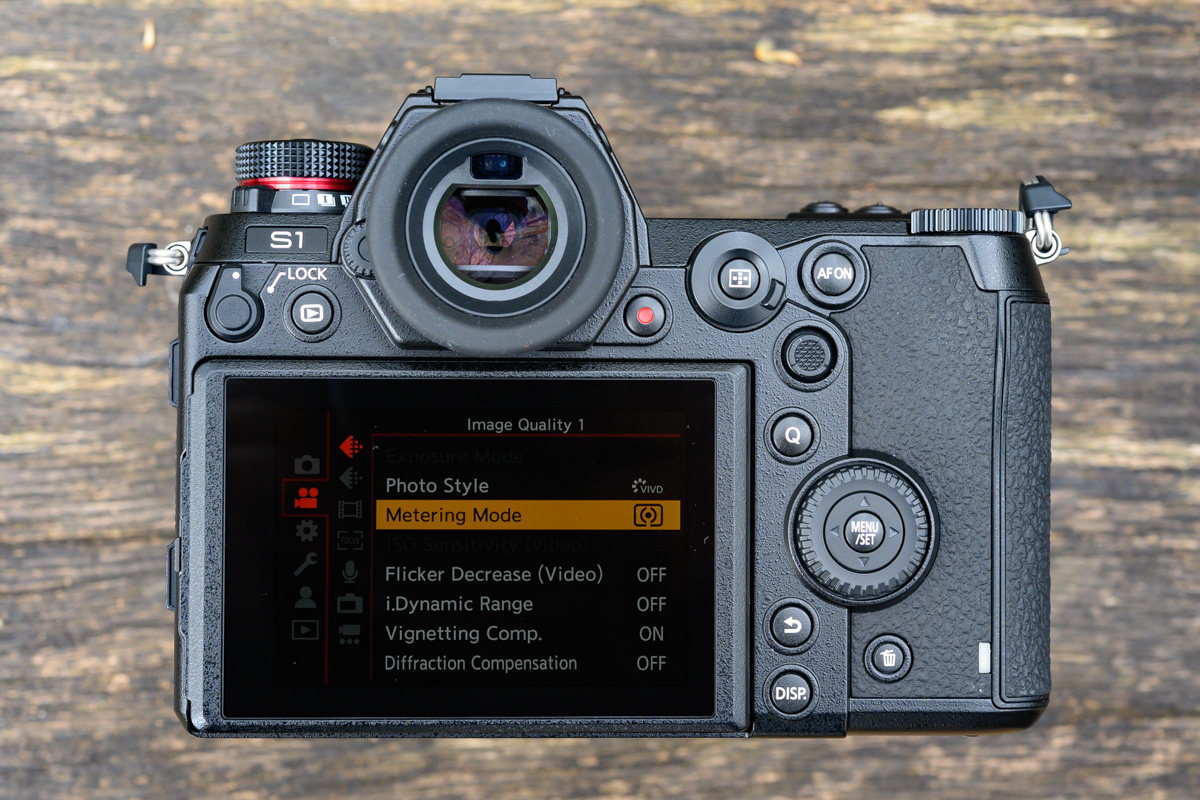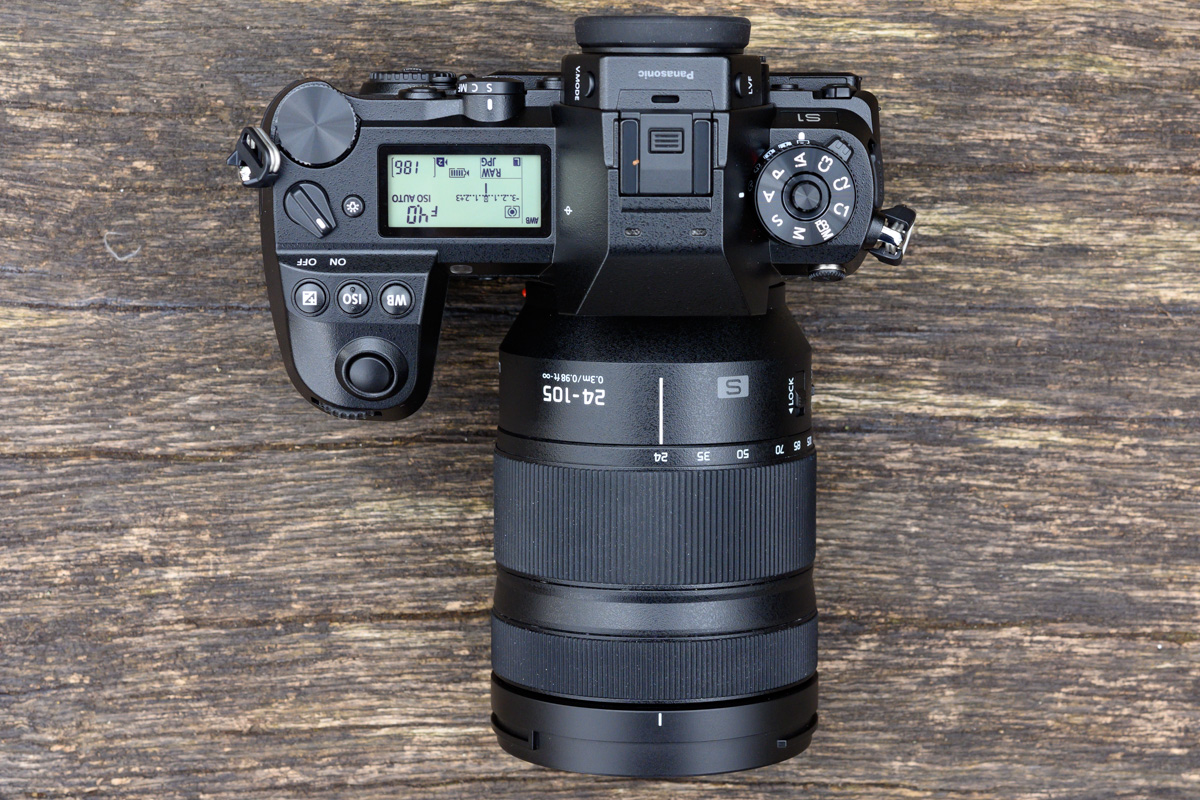TechRadar Verdict
With tried-and-tested goodness from Panasonic's G series cameras alongside a stunning new viewfinder, excellent video and a sound full-frame sensor, the S1 does much to impress. A huge body, however, along with some awkward controls and an autofocus system that's behind those on its peers, mean there's room for improvement.
Pros
- +
Best-in-class viewfinder
- +
Effective image stabilization system
- +
High build quality and weather resistance
- +
Excellent buffer depth
- +
Hugely customizable
- +
Superb video quality
Cons
- -
Large, heavy body
- -
Handful of minor ergonomic issues
- -
Focusing system lags behind rivals
- -
Eyecup can get in the way of LCD
- -
No DCI 4K, and V-Log is paid-for update
Why you can trust TechRadar
The Panasonic S1 is the more junior of two cameras that kicked off the company's still-fresh S system. Much as the Nikon Z6 is to the Z7, the S1 is essentially a carbon copy of its more senior S1R sibling, but with a lower-resolution sensor and lower price point. As such, it seems likely to have a wider appeal for those who want a good all-round full-frame mirrorless camera rather than for megapixels chasers.
While the company joins Canon and Nikon in playing catch-up with Sony in the full-frame mirrorless race, Panasonic has the support of its L-mount partners Sigma and Leica in developing the system more fully. That means you're able to use lenses from one manufacturer on cameras from another, and with all three pitching in the system will no doubt flourish before long.
Panasonic has also been prolific with its Micro Four Thirds system of G-series cameras and lenses in the last decade, so if it takes the same approach with its latest line we could be in for a treat.
Features
- 24.2MP full-frame CMOS sensor
- 5-axis Sensor Shift system with Dual I.S. 2 support
- 4K UHD video recording to 60p
In contrast to Panasonic's Micro Four Thirds G-series cameras, the Panasonic S1 sports a larger full-frame sensor that's sized to the 3:2 aspect ratio. This holds a total of 25.28MP, with 24.2MP effective, which places it at the same level as the Sony A7 III and Nikon Z6, and just slightly behind the 26MP Canon EOS RP. This sensor works across a sensitivity range of ISO100-51,200, but you can adjust this down to a setting equivalent to ISO50 and up to ISO204,800-equivalent if you need to.
The sensor works with a new Venus Engine, and for the times where 24.2MP just doesn't cut it you can call upon a new High Resolution mode. This troubles the sensor-based image stabilization system – more on that in a second – to capture eight images at once, with minute adjustments in the sensor's position between each one, before blending them into a 96MP (12,000 x 8,000-pixel) composite. What's particularly good to discover is that these are output as raw files rather than JPEGs, so you can still process them as you would do any other raw file.
Panasonic currently has three L-mount lenses available for the S1, namely the Lumix S Pro 50mm f/1.4, Lumix S Pro 70-200mm f/4 O.I.S. and the Lumix S Pro 24-105mm f/4 Macro O.I.S., and it's the latter that currently serves as the default kit lens. Panasonic has also pledged to make 24-70mm f/2.8, 70-200mm f/2.8 and 16-35mm f/4 lenses available throughout 2019, along with two teleconverters, and four further optics in 2020. This will result in 10 lenses in total by the end of 2020, a range that will be bulked up by 18 from Leica (including existing options) and 14 that will shortly arrive from Sigma.

Panasonic's sensor-based image stabilization system has been a feature on its G-series cameras for some time, so it's no surprise to see that it makes the cut here. On its own this provides five-axis stabilization for non-stabilized lenses, although it also works in concert with O.I.S. lenses that have their own two-axis stabilization systems, a technology known as Dual I.S. 2. Right now, this only applies to the aforementioned Lumix S Pro 70-200mm f/4 O.I.S and Lumix S Pro 24-105mm f/4 Macro O.I.S optics, but the benefit here is up to six stops of correction, which is very respectable.
Sign up for breaking news, reviews, opinion, top tech deals, and more.
Using a lens without image stabilization? You can enjoy 5.5 stops instead, which is still competitive. On top of this, a slightly hidden but very neat I.S. Status Scope feature can also been brought up, its purpose being to give you a graphical representation of vibration in real time.
This S1's stabilization system works for both stills and video shooting, and Panasonic has form for kitting out its models with a strong suite of video recording tools. Indeed, the S1 is arguably a stronger camera for video than the more senior S1R, thanks to its ability to shoot 4K UHD video using the whole width of the sensor – so no crop factor to worry about – and full pixel readout at up to 30p. You can also record at this setting without any time limit (unlike at 4K60p, where there's a 29 min, 59 sec cap), although footage is split into individual files.
Video can be recorded in 4K UHD quality at up to 60/50p (though without full pixel readout), with 25p and 24p frame rates also on hand, and 10-bit 4:2:0 footage can be captured internally when using the HEVC/H.265 codec – otherwise, you can capture 8-bit 4:2:0 footage using MPEG-4/H.264.
Panasonic will also provide a software key update that will boost the S1's video specs to 10-bit 4:2:2 external recording when shooting 4K footage in 60/50p, and 10-bit 4:2:2 internal recording when capturing in 30p/25p/24p, later this year. This will also unlock a V Log option, although all of this will come at a price, rather than being available as a free firmware update.
Right now, Cinelike D/V and Like709 gamma curves can be called upon, as can Hybrid Log Gamma and Like2100 profiles, while a new flat mode that reduces contrast and saturation for those intending on processing their footage is also available. Color and black and white flavors of Hybrid Log Gamma modes – designed for displaying images on televisions that support the technology – join these.
Full HD videos can also be captured at a maximum 60p, although faster frame rates up to 180/150p are also available when using the High Speed Video mode with the intention of outputting slow-motion footage. 4K footage captured at 60/50p can be output in slow motion.
There are also standard 3.5mm ports for both microphones and headphones hidden behind their own door at the side of the camera, while a full-size HDMI port is positioned beneath these. You can also connect microphones with an XLR connector to the camera via an optional XLR1 microphone adapter that slips into the hot shoe.
Sensor: 24.2MP full-frame CMOS
Lens mount: L mount
Screen: 3.2-inch tri-axis touchscreen, 2.1 million dots
Viewfinder: OLED EVF, 5.76 million dots
Burst shooting: 9fps (6fps with continuous AF)
Autofocus: Contrast-detect AF with DFD
Video: 4K UHD (up to 60/50p)
Connectivity: USB 3.1 (Type-C), HDMI, Wi-Fi and Bluetooth
Battery life: 380 shots with SD / 360 with XQD
Weight: 1,021g (including card and battery)
The Panasonic S1's electronic viewfinder boasts a staggering 5.76 million dots spread across its OLED panel. The current standard for high-end mirrorless cameras is 3.69 million dots, so this is a significant step up. Panasonic claims this refreshes at a very respectable 120fps, and has a "virtually non-existent" 0.005 sec lag time that should please those looking to pan subjects, and you can adjust its magnification from the maximum 0.78x down to 0.74x and 0.7x using a button to the side of the finder.
The LCD screen below this also boasts impressive specs. It's based around a 3.2-inch touch-sensitive panel with 2.1 million dots, and it can be adjusted in the same three-axis tilt manner as the screen on Fujifilm's X-T3. In practice, this lets you angle the screen up or down regardless of whether you're holding the camera in a landscape or portrait orientation. It doesn't flip all the way around to face the front like the screens on the Canon EOS RP or Panasonic's own GH5S or G9, but then this isn't a camera that's necessarily aimed at that same audience. In any case, this is all still very competitive on paper.




Those capturing sports, action or anything else that isn't completely static can shoot at up to 9fps at full resolution, or 6fps when continuous focus is enabled. If you're happy with 6K-quality (18MP) images, you can use the 6K Photo mode to shoot at up to 30fps, and if resolution is even less of a concern you can boost this to a maximum 60fps at 8MP with the 4K Photo mode.
Photo Styles on the S1 run from Standard, Vivid, Landscape, Portrait and Natural options through to three monochrome settings and the video profiles described above. Panasonic has left space for four further customizable My Photo Style settings on top of these, which makes it easier to achieve the look you want without recourse to software.
The company has also played catch-up with some other manufacturers with respect to white balance and metering. The Auto White balance options welcome a new AWBw setting that, Panasonic says, "creates an attractive moderate red tint", while metering modes cover the expected evaluative, center-weighted and spot triplet, but are now joined by a Highlight Weighted Light Metering Mode that meters to retain details in particularly bright areas.
The electronic viewfinder boasts a staggering 5.76 million dots spread across its OLED panel. The current standard for high-end mirrorless cameras is 3.69 million dots, so this is a significant step up
One particular area of strength for the Panasonic S1 is the memory card setup. There are two slots on the body, one for XQD cards and another for SDHC/SDXC cards. The XQD slot not only allows users to take advantage of the current generation of fast and rugged cards, but it's also set to support the incoming CFExpress format that will take up the performance baton. The SDHC/SDXC slot, meanwhile, supports both UHS-I and UHS-II cards, as well as V90-rated cards for video recording. The fact that there are two different cards slots may not please everyone, but – with UHS-III cards still not available – each slot is at least specced to the highest standard right now.
The battery is significantly larger than those inside rival cameras, so it's something of a surprise to discover that battery life itself isn't particularly outstanding. The CIPA rating stands at 380 frames when using an SDHC/SDXC card, and 360 frames when shooting to an XQD card, although Panasonic claims the Power Save function allows you to boost this to 1,150 and 1,000 shots respectively. Real-world use on standard settings is likely to give you a figure in between the two, and you also benefit from the convenience of being able to charge the battery while it's inside the camera via its USB port, a process that's said to take around two hours in total.
The battery is significantly larger than those inside rival cameras, so it's something of a surprise to discover that battery life itself isn't particularly outstanding
Wi-Fi and Bluetooth are on board for easy image sharing and remote camera control, and you can use this with iOS and Android phones and tablets running the new Lumix Sync app. On top of that, the camera is also compatible with the new Lumix Tether software, which allows you to operate the camera, and instantly download images, via a USB connection to a computer.
